History
The Land
Waikereru is encircled by a ring of steep hills, with Motukeo to the east – a sacred mountain for local iwi, a fishing mark out at sea and a leaping off place for spirits, and Te Ai ā Te Kurī to the west.
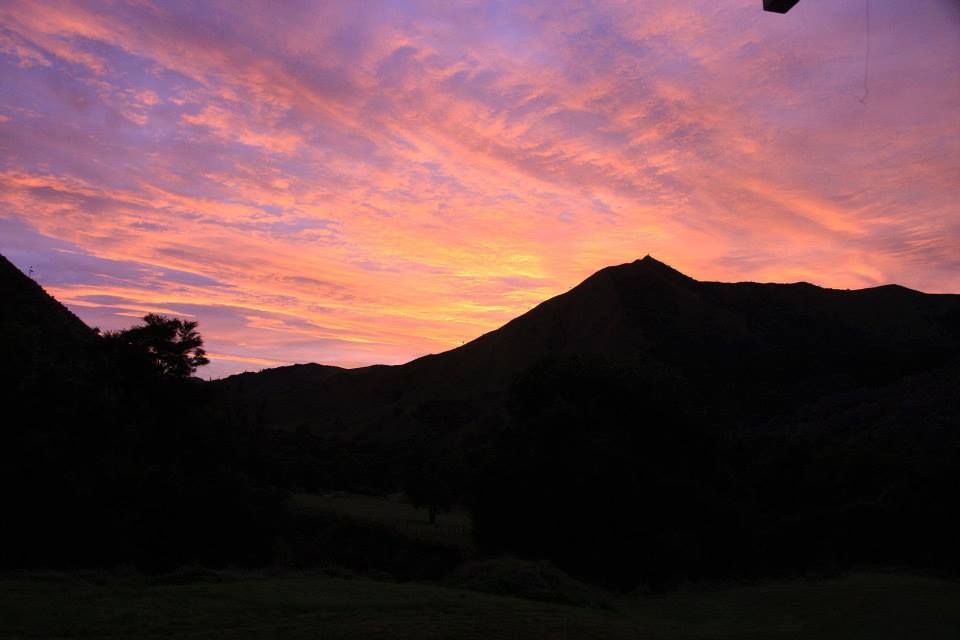
When the first Europeans arrived in the district, the flats and foothills in the Waimatā valley were covered with fern or gardens, with dense lowland bush and trees in the high valleys and inland. The place is named for the flocks of kereru (native pigeons) that live in the forest.
A small unfortified village once stood on the low hill at Waikereru (Pā Hill), looking up and down the Waimatā River, with pits for kūmara or possibly potatoes dug into the summit and one of the terraced spurs.
In the mid 1860s Raharuhi Rukupō, one of the leading rangatira (chiefs) in the district, set aside the Whataupoko block (including Waikereru) and sent men to fetch European settlers from Hawkes Bay to establish a sheep farm. Henry Parker took up the offer and began farming sheep on the block, followed by his brother William Parker.
When legal title to the land was established in 1869, the local chiefs settled its ownership among themselves. They included Raharuhi Rukupō, the chieftainess Riparata Kahutia and the Aitanga-ā-Māhaki chief Hirini te Kani. Longbush lies in that part of the block associated with Te Aitanga-ā -Māhaki, a local iwi or descent group.
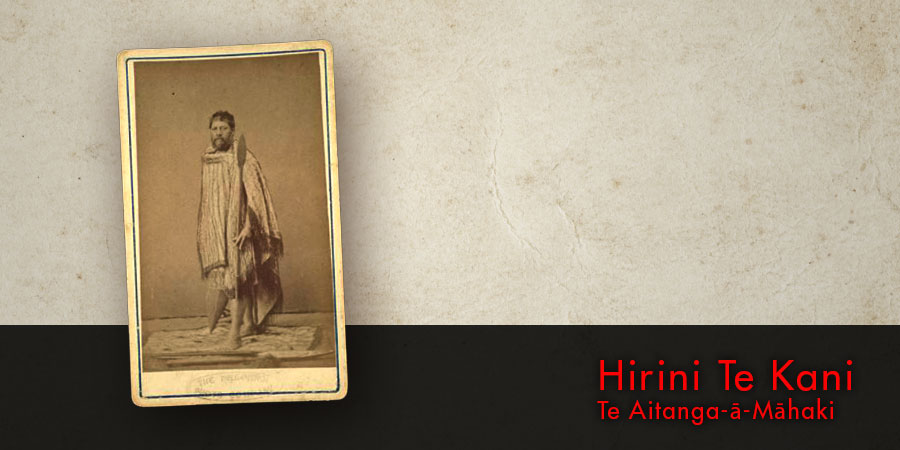
In 1885 the ownership of the Whataupoko No.9 block passed to the New Zealand Native Land Settlement Company, which sold part of it to John Dunlop. From that time, the Waikereru Station (3300 acres) was worked as a pastoral farm, with two families, the Donners and the Hegartys, running the farm from 1895 to 1990. For further details, see Gordon Jackman’s excellent archaeological report on Waikereru.
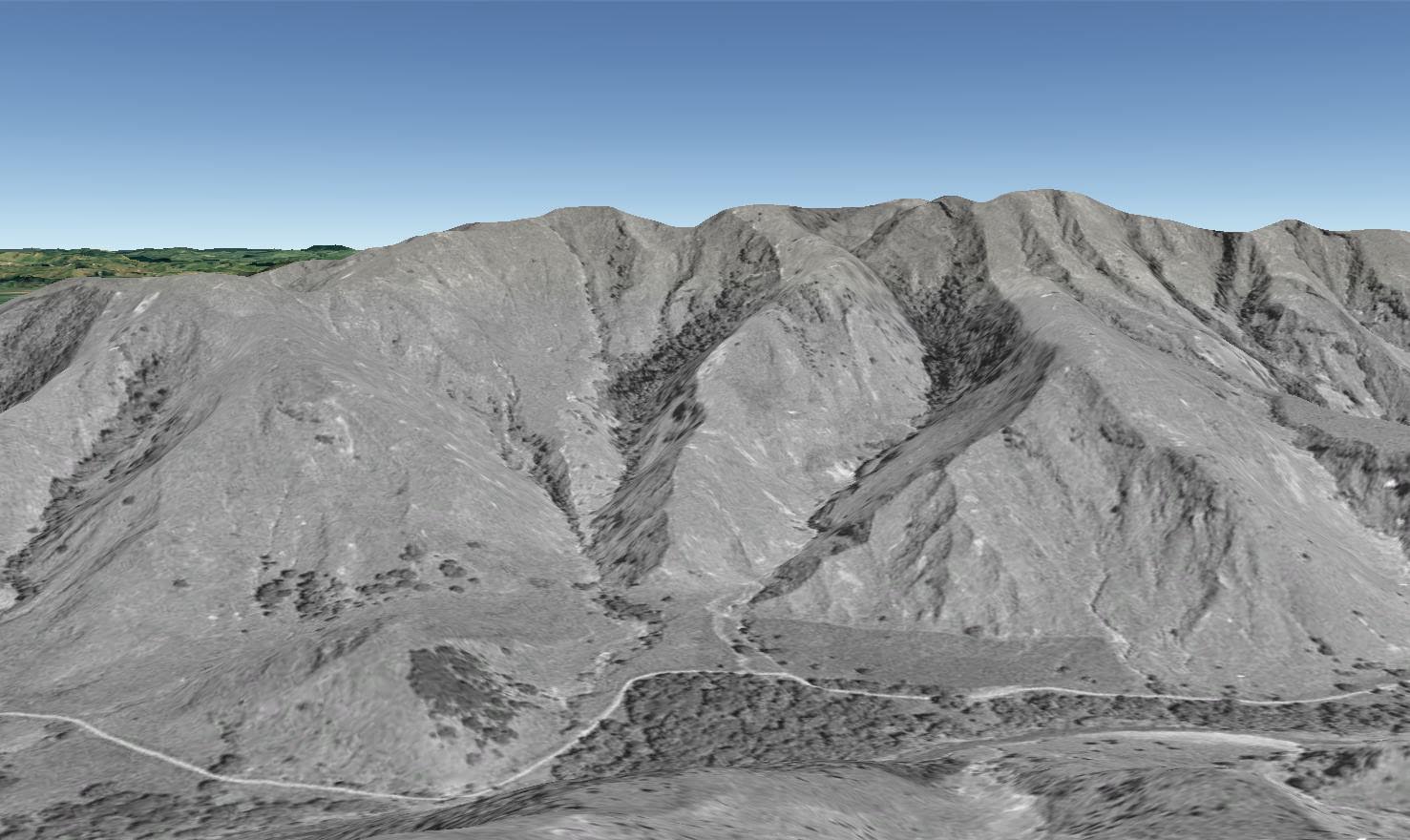
The Hegartys created a pond below Pā Hill, and planted a stand of Italian veneer poplars from Ruakura. By 1989 the hills had been cleared, leaving only a strip of lowland bush alongside the Waimatā River.
This was known as Longbush, a favourite picnic spot for local families (including the Thorpes, Anne’s family). On hot summer days Anne and her brothers and sisters, like many other Gisborne kids, would cycle up the long, winding gravel road to Longbush and swim in the Waimatā River.
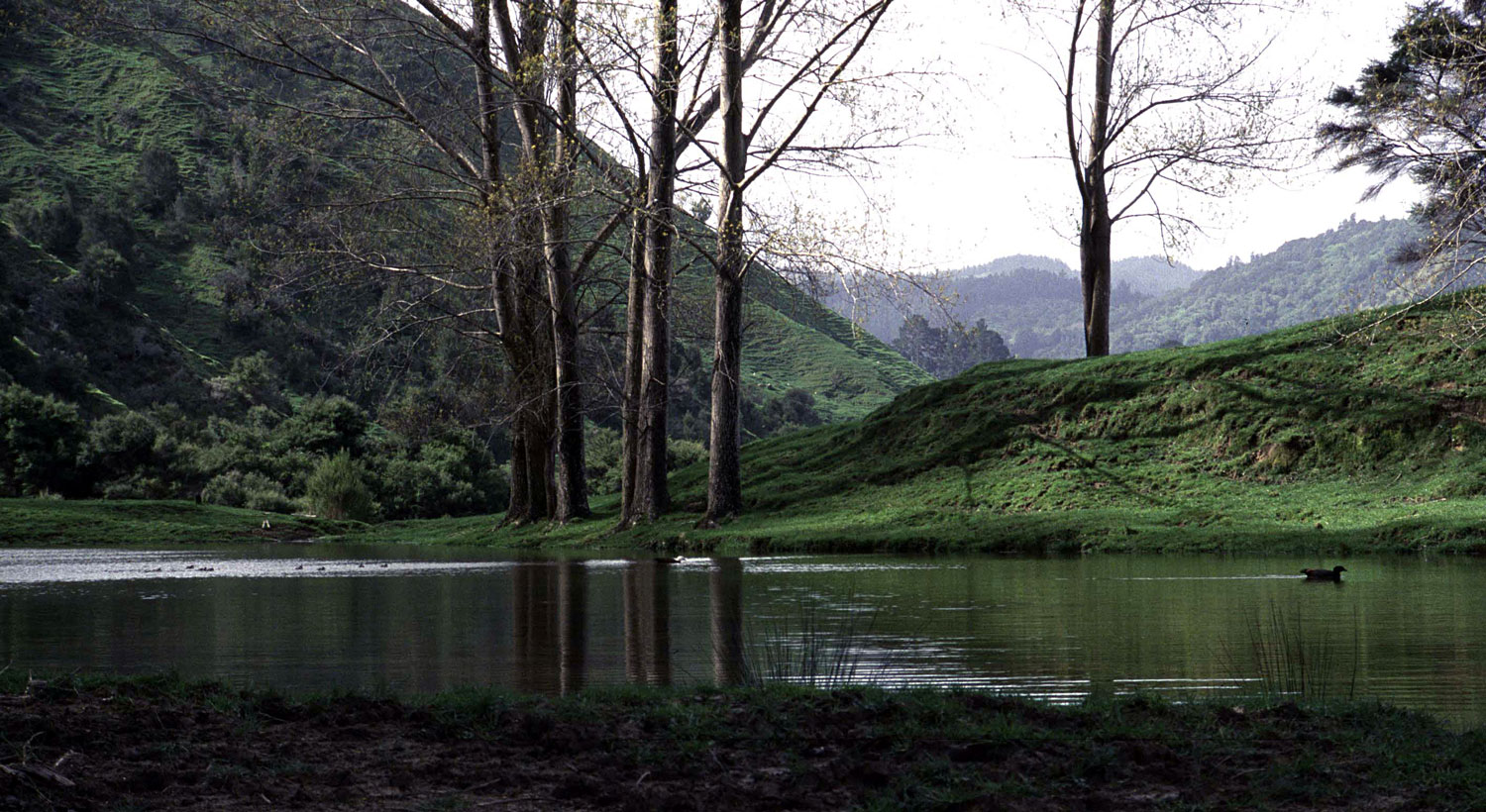
After the trees on the land were felled, the slopes began to slip. During Cyclone Bola in 1988, there was severe slumping in the foothills, and large quantities of sediment were dumped in the Waimatā River, destroying the Longbush swimming hole.
In 2000 when Jeremy and Anne Salmond purchased the land, Waikereru was under severe ecological threat. Cattle grazed the hills and the riverside bush, and the forest floor was barren. Garden rubbish and other refuse including cars were dumped in the gullies or beside the river.
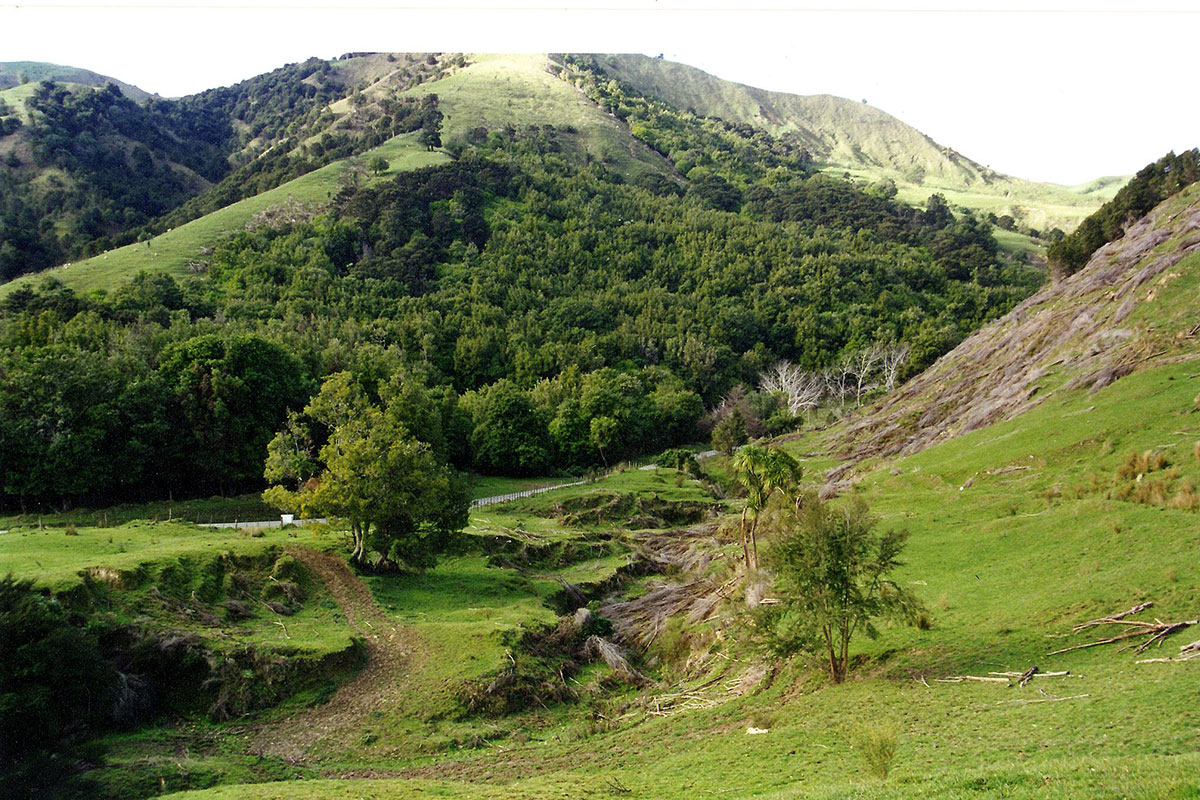
The Project
Stage one - Longbush Reserve
In 2001 the project began when Longbush Reserve, the riverside bush, was fenced and placed under a QEII covenant.
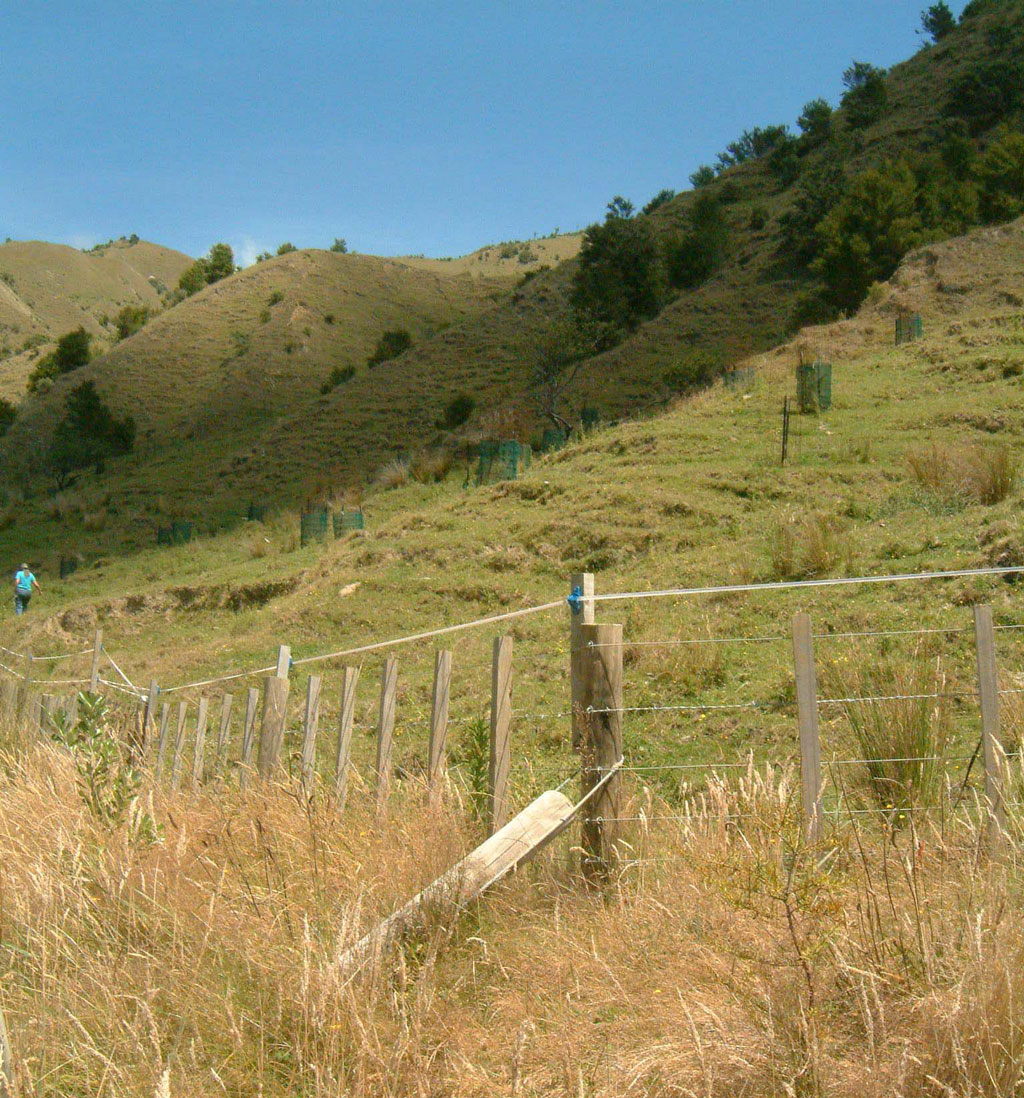
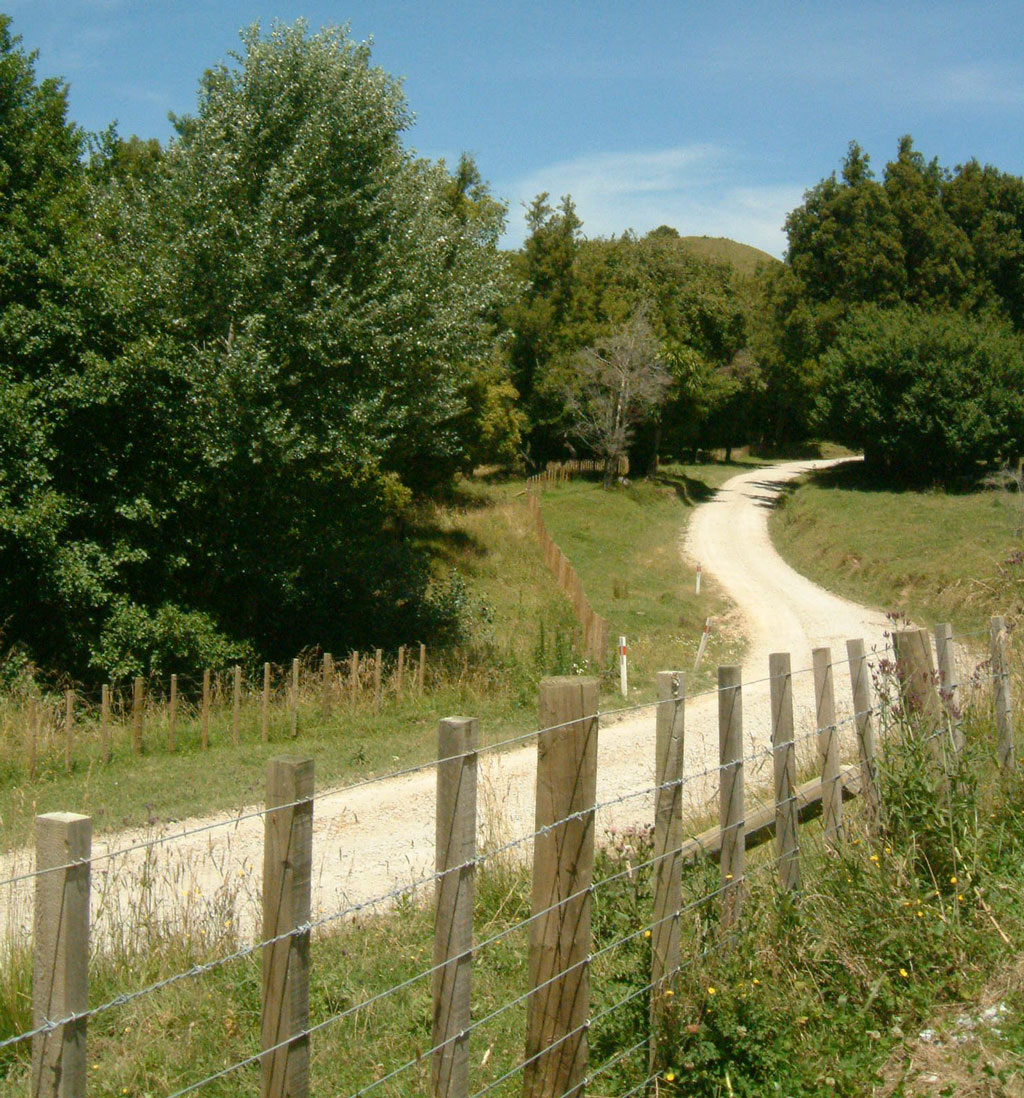
The following year, Steve Sawyer of Ecoworks began an intensive programme of weed control and trapping opossums, rats, stoats, weasels and wild cats.
The owners worked with Andy Carrie from the Conservation Corps at Tairāwhiti Polytechnic to plant the clearings.
The restoration of the bush along the Waimatā River is now complete (although ongoing maintenance is essential). The results to date have been dramatic.
The forest floor has been colonised by kawakawa and other plants, and rare plants including black and hooded green orchids are re-emerging (See list of plants at Longbush).
The numbers of indigenous birds including kereru, tui, bell-bird, fantail, kingfisher and rūrū (native owls) have markedly increased, with sightings of rare species including whiteheads, weka and the New Zealand falcon.
Grey geckos, long-tailed bats and black-headed tree weta live in the bush, and weta from the Longbush Ecosanctuary have been used as a source population for a tuatara and petrel re-introduction project at Young Nick’s Head in Gisborne.
The Longbush Ecosanctuary is now the only area in the Tūranga Ecological District with such high remaining levels of biodiversity. Almost every other remnant forest area has high pest densities and abundant exotic weeds.
Stage two - the wildlife corridors
The second stage in the restoration of the Longbush Ecosanctuary was to create wildlife corridors between the Reserve and regenerating bush in the valleys, which are themselves adjacent to large QEII covenanted areas on several other properties across the western ridge.
This began in 2000 with a planting by members of the Thorpe family, followed by plantings by the Conservation Corps at Tairāwhiti Polytechnic from 2001-6. In 2006 the Biodiversity Fund awarded a grant to support this step in the programme, followed by a three year grant over 2007-9.
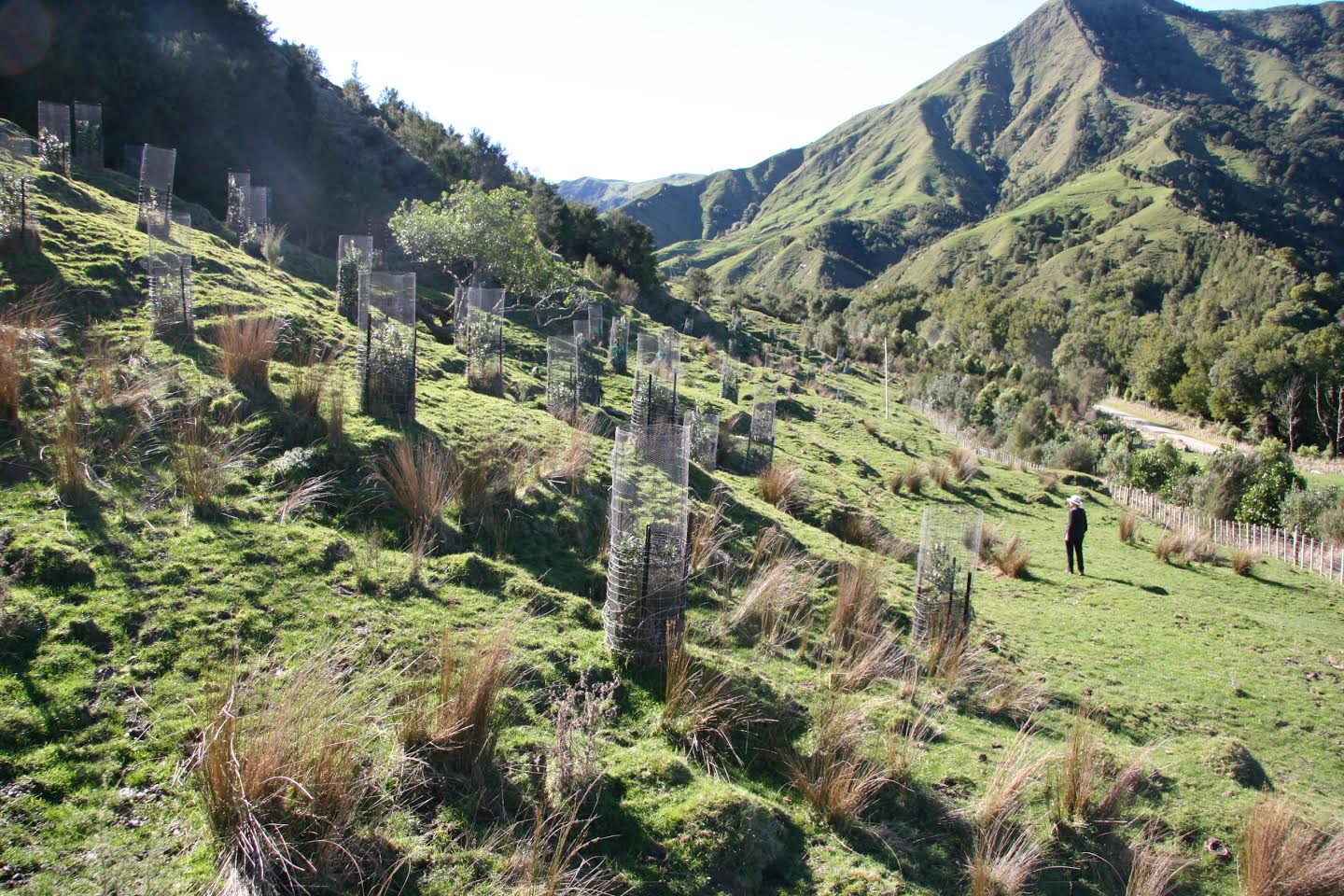
Since then, wildlife corridors have been created along the three streams which run down the valleys from the high western ridges, across the flats and down to the Waimatā River. The most southerly of these corridors has been allowed to regenerate naturally, while those along the middle and most northerly streams have been created by fencing and planting.
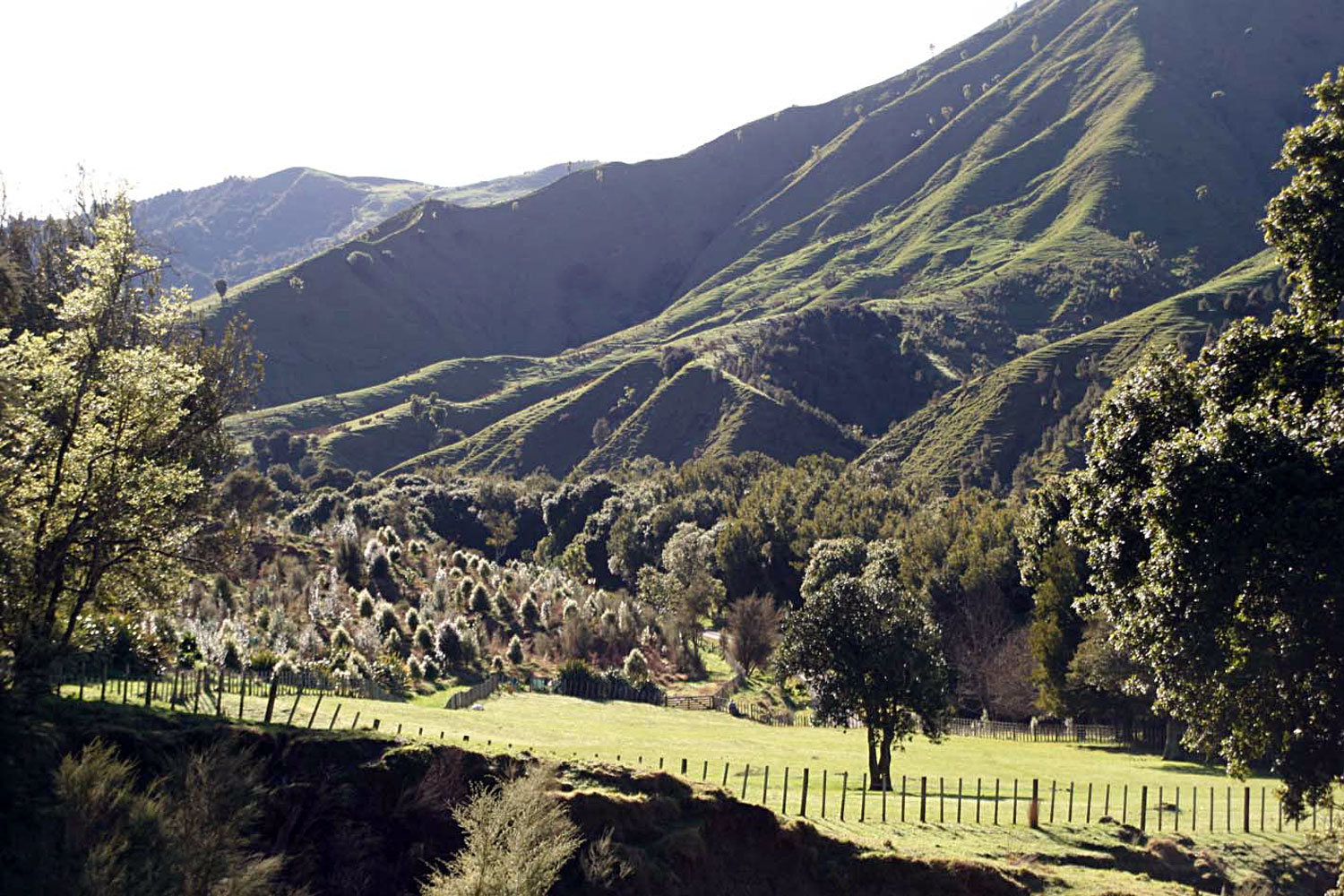
Groves of berry-bearing trees (titoki, karaka, pūriri and taraire) and the Rene Orchiston collection of 60 varieties of harakeke (New Zealand flax) have been planted along the foothills to provide seasonal food supplies for native birds. A group of local weavers led by Meikle McNab of Ngāti Porou care for the Orchiston collection, which is regarded as a national taonga or treasure.
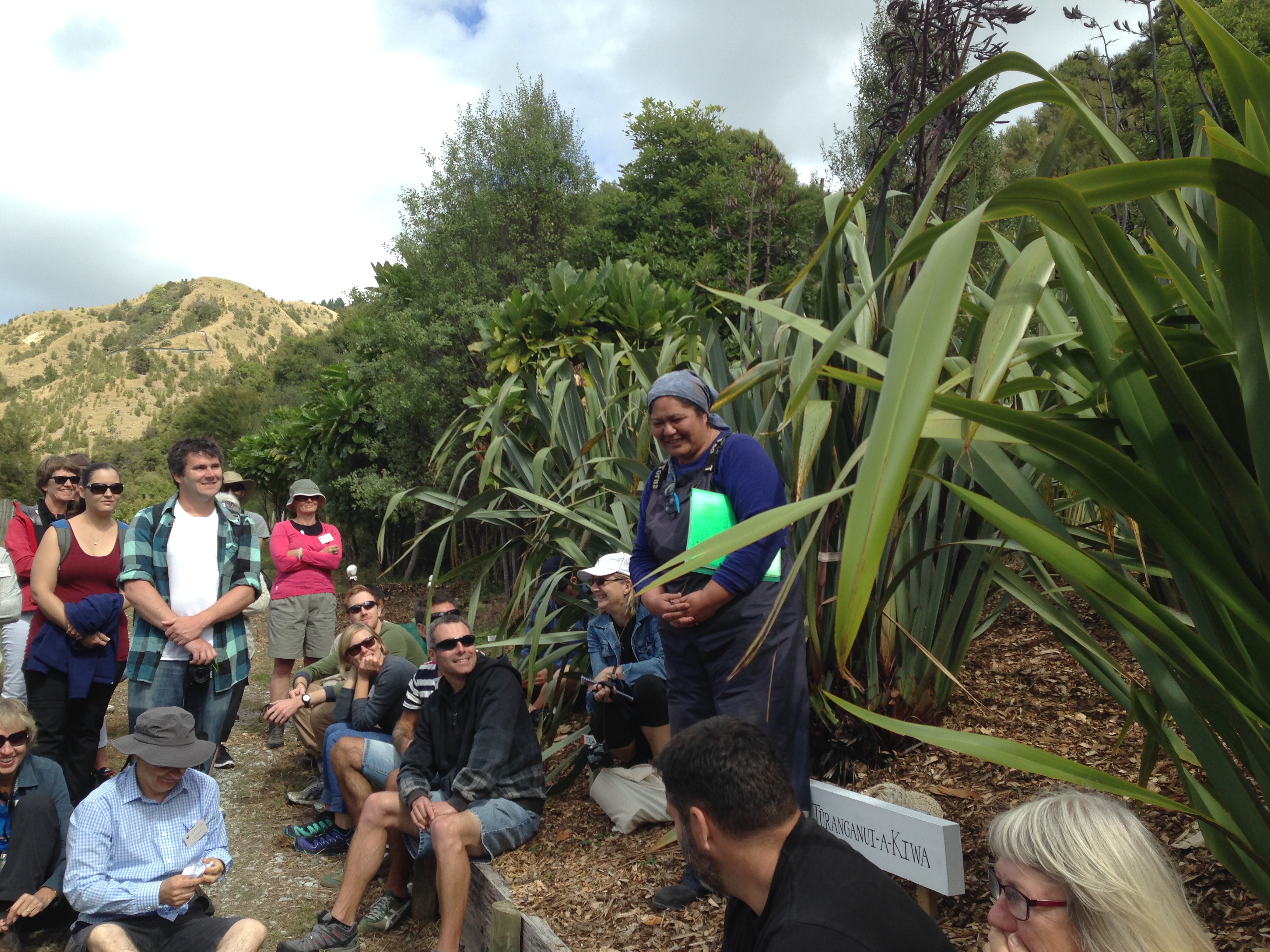
Stage three - Waikereru
In 2005, Longbush Reserve was recognised as a Priority 1 RAP (recommended area for protection) by the Department of Conservation.
Waikereru has many advantages for long-term ecological restoration. It is close to Gisborne City, an ideal site for educational programmes.
The riverside bush and the hill area are protected by QEII covenants, with several other large QEII covenanted blocks across the western ridge.
The corridors for wildlife are already in place, with good seed stocks and established populations of many species of native birds in the Ecosanctuary and the PMA across the river. Three creeks run from the ridgelines across the flats to the Waimatā River, providing a variety of habitats.
In 2009 the Longbush Ecological Trust, which is responsible for the restoration of both Longbush Reserve and Waikereru, was set up to restore the covenanted areas. A Management Plan was produced outlining future opportunities for the conservation of Longbush Reserve and Waikereru.
Medium-term initiatives include Make Longbush Longer, a community project to restore bush to the banks of the Waimatā River; and Friends of the Waimatā, a community network which aims to restore the waters feeding the Waimatā to their original state, with clear, slow-flowing streams and ponds, full of life and indigenous freshwater species.

In 2010 Waikereru was established. The sheep that grazed the hills were removed, and a programme of intensive pest and weed control, planting in the foothills and natural regeneration in the valleys is well under way.
This is by far the most ambitious phase of the project to date, aiming to restore 100 hectares of hill country as a haven for locally extinct indigenous species of birds, plants and animals, including brown kiwi, weka, robin, tomtit, kākāriki, kākā, rifleman, East Coast kaka beak and broom, forest and green gecko.
This will be the largest fully protected area in the Tairāwhiti region (from Opotiki to Wairoa, including the hinterland) with the sustained predator and weed control that allows these species to survive and flourish.
During 2011, a small predator-free enclosure was built in the Waikereru hills, and five oi (grey-faced petrel) chicks were successfully translocated and reared, and flew off to the Pacific (see attached report).
During 2012, ten chicks were reared at Longbush, and 16 chicks in 2016, flying off on their Pacific migration.
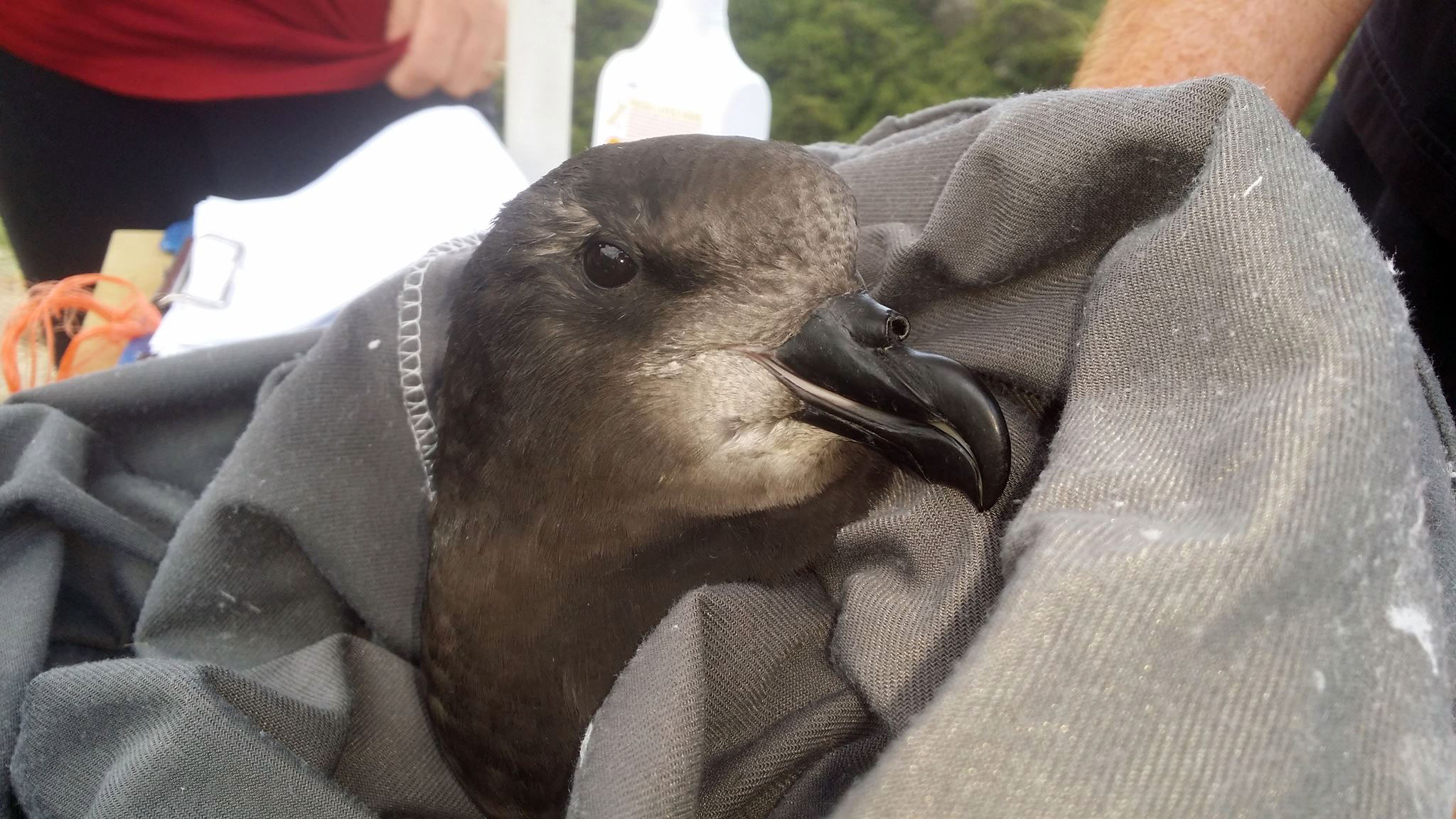
These are the first steps towards establishing an inland oi [grey-faced petrel] colony at Waikereru - a world first. Although oi and other seabirds were a traditional source of guano to feed the native plants and trees, inland colonies of oi (once numerous) are now rare in New Zealand.
A predator-free fence in the Waikereru hills for Eastern brown kiwi, kākāriki, kākā and rifleman is also planned, with a kiwi creche behind the Welcome Shelter – the Kohanga Kiwi / Kiwi Haven. In front of the Welcome Shelter, the 1769 Garden has been established, with tracks around Pā Hill and the pond.
In 2019, the Wild Lab Tiaki Taiao educational programme for local kids will get under way, after a series of trial workshops. Key events since 2012 are covered in the ‘News’ section of the website.
A ten year plan for Waikereru
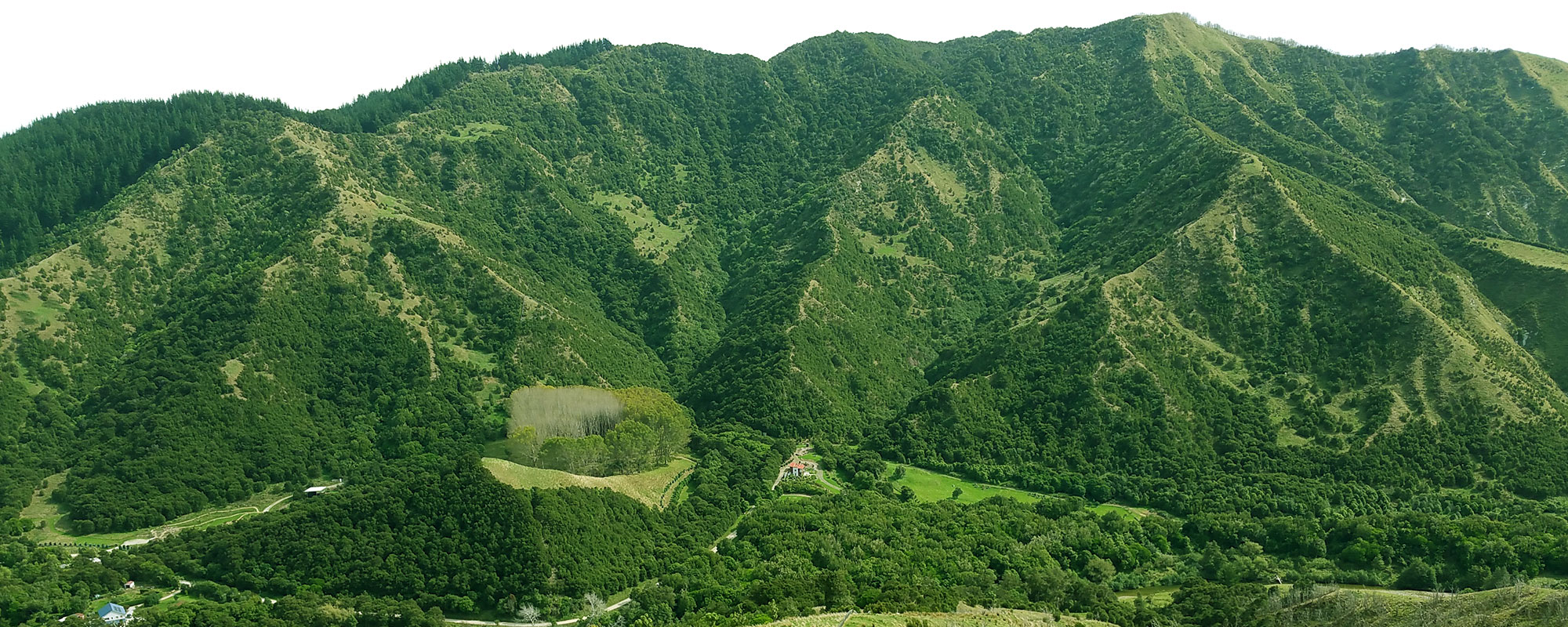
In 2017 the trustees met to discuss a 10 year plan to guide the future development of Waikereru.

